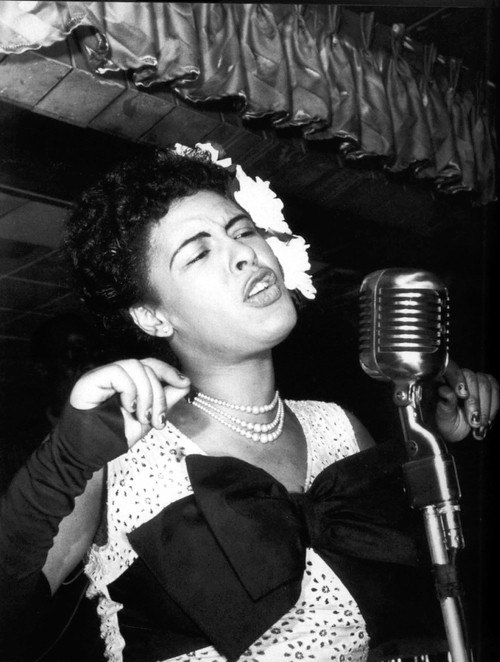Happy birthday: remembering the life of Billie Holiday

Courtesy Photo / kalamu.edu Billie Holiday
Apr 7, 2011
On April 7, 1915 – 96 years ago today – a baby girl was born in Philadelphia. Her name was Billie Holiday, or as some would come to know her, “Lady Day.” She would eventually grow up to become what of the most influential jazz singers of her generation, and one of the first African-American singers to perform with a white orchestra.
By 1958, just a year before Holiday’s death, Frank Sinatra would call her “unquestionably the most important influence on American popular music in the last 20 years.”
It was the way that Holiday sang which won her recognition. When she made her musical debut in the 30s, it was uncommon for jazz singers to express emotions with their voices. Ray Ellis, who arranged the orchestration for Holiday’s 1958 album, “Lady in Satin,” explained in the liner notes that emotional power was Holiday’s ace card.
“After we finished the album I went into the control room and listened to all the takes,” Ellis said. “I must admit I was unhappy with her performance, but I was just listening musically instead of emotionally. It wasn’t until I heard the final mix a few weeks later that I realized how great her performance really was.”
Despite her acclaim, history looks back on her life through a fog of misconceptions and uncertainties. Though Holiday wrote an autobiography entitled “Lady Sings the Blues” alongside ghostwriter William Dufty, PBS Jazz refers to the book as “self-serving and inaccurate.” In May of 2005, national post writer Robert Fulford published a column confronting Holiday’s shadowy background.
“There will never be an authoritative Life of Billie Holiday,” Fulford wrote. “The documents don’t exist, and the witnesses have often lied, many of them because they were crooks. Even honest witnesses have faulty memories, inflected by narcotics; Billie herself would tell the same story several ways.”
But what parts of her life are known certainly tell a disturbing story. Holiday quit school during the fifth grade and took a job cleaning and running errands at a brothel in Baltimore. At only twelve years old, she was arrested for prostitution and sent to prison until the age of fourteen. Desperate for money, she began to perform at clubs in Harlem. At the age of 18, she was “discovered” by producer John Hammond, who helped her arrange her first recordings.
According to her autobiography, Holiday’s commercial peak was in 1947, when she’d made $500,000 from the previous years. During this time, she was involved in several abusive relationships, and had relied heavily upon narcotics. Many of the details of this portion of her life are wrapped in rumor and speculation.
On May 31, 1959, liver and heart disease landed Holiday in Metropolitan Hospital in New York. On July 12, after narcotics were discovered in her possession, she was placed under house arrest at the hospital. It was there that she died from cirrhosis of the liver on July 17. She was buried in Saint Raymond’s cemetery in the Bronx.
Now, almost a full century after her birth, Holiday is most often remembered not for her conflicted life – but for the way she impacted the artists of her generation. As put by Phil Schaap, curator of Jazz at Lincoln Center for the Performing arts in New York, during a November 2010 interview on NPR.
“She speaks to your heart,” Schaap said. “She catches your ear, and she reaches your mind. She does this with an emotional power that causes genius beyond words.”






















